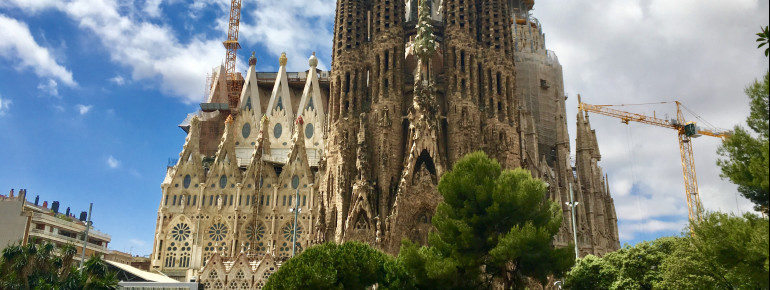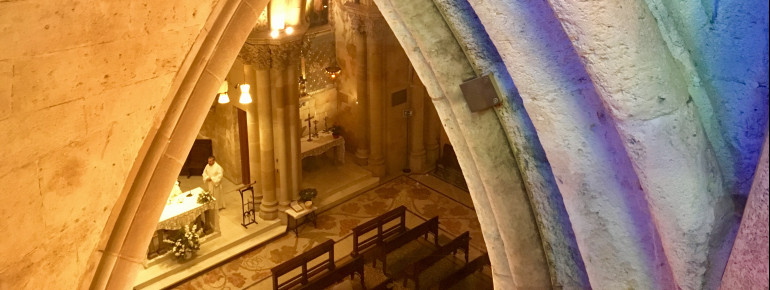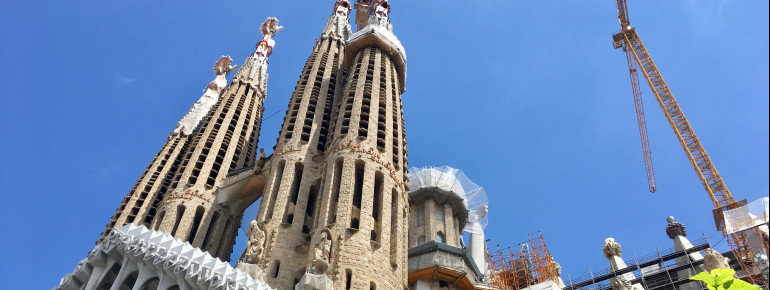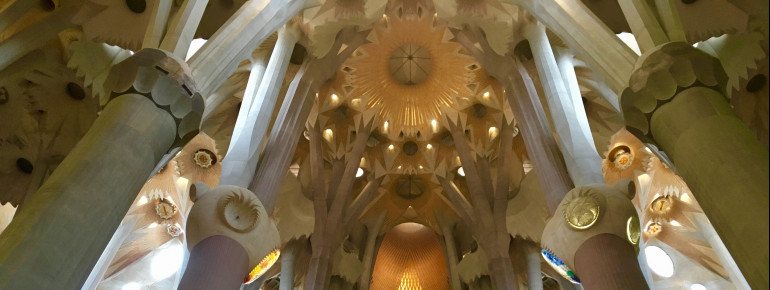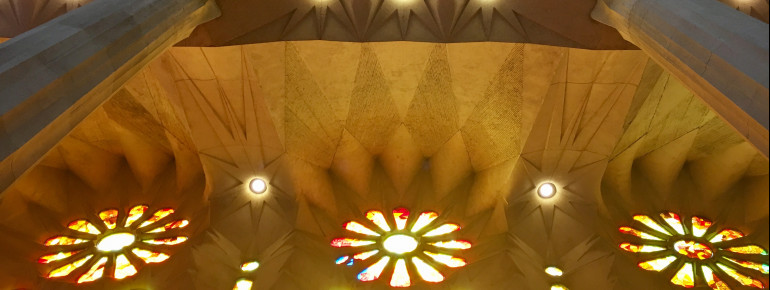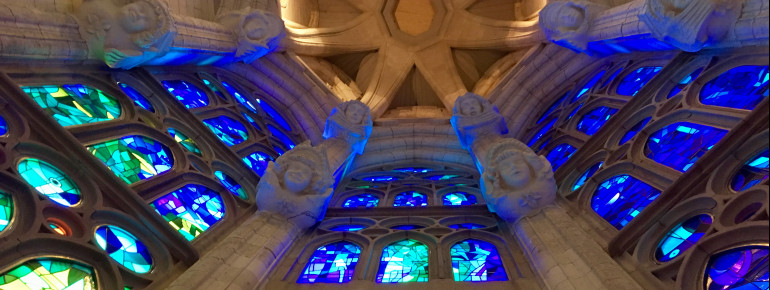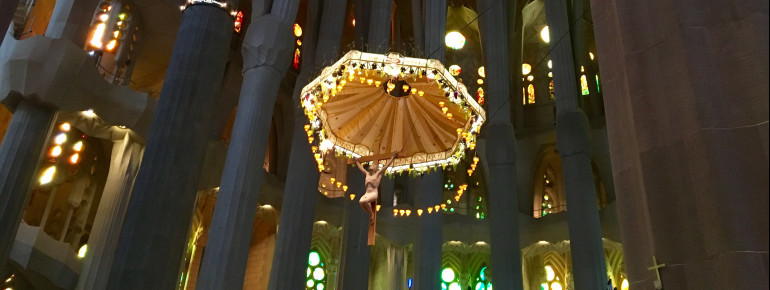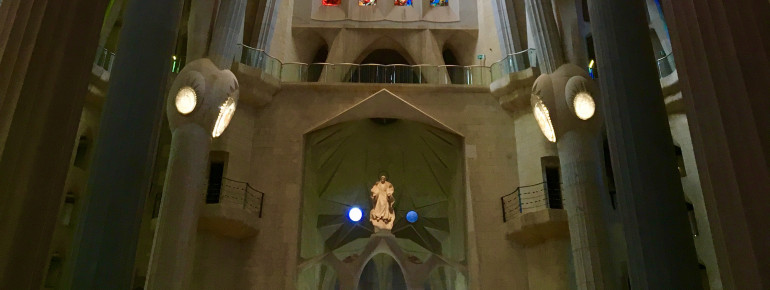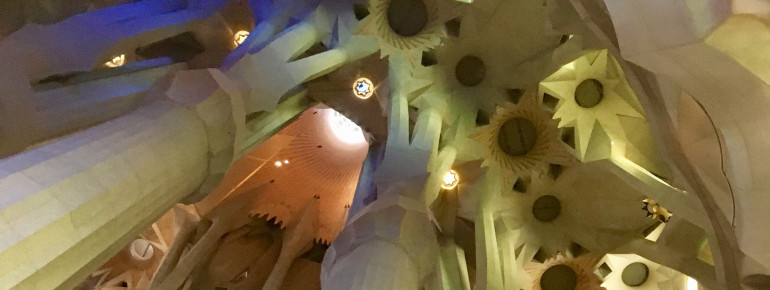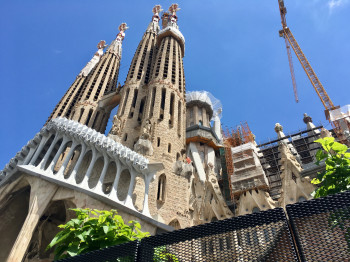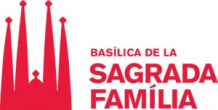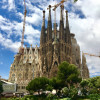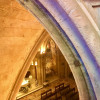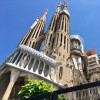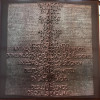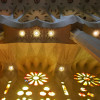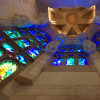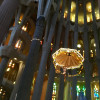Contents
Description
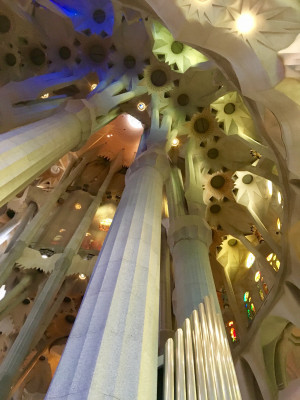
The Basilica and Expiatory Church of the Holy Family, Sagrada Família, is a Roman Catholic church located in Barcelona, Spain. Together with several other Gaudí buildings in Barcelona, the Crypt and the Nativity Facade of the Sagrada Família are parts of a UNESCO World Heritage Site. In November 2010, Pope Benedict XVI consecrated and proclaimed it a minor basilica.
Three Facades
Gaudí’s design includes eighteen spires, which are to represent the Twelve Apostles, the Virgin Mary, the four Evangelists and Jesus Christ, whereby the spire of the latter will be the tallest of all and will make the Sagrada Family the world’s tallest church building. Moreover, the church will have three facades, namely the Nativity Facade to the East, the Glory Facade to the South - which is still to be completed, and the Passion Facade to the West. As the construction of the Nativity Facade began long before Gaudí’s death and was almost completed when he died, this part of the church bears the most direct influence of its architect.
While the Nativity Facade shows the life of Christ rich in detail, also containing a cypress tree symbolizing the tree of life, and is generally highly decorated, the Passion Facade is the exact opposite. This part of the church is plain and austere, representing Christ’s suffering. The construction of the Glory Facade began in 2002. It will be the most monumental of all three and will be representing the Ascension of Christ and other scenes, such as the Seven Heavenly Virtues or the Seven Deadly Sins. This facade also includes a large staircase, which requires the demolition of a complete block with buildings on the other side of the street Career the Mallorca.
Interior Design
The interior is characterized by columns branching out like trees in a forest, whereby each tree splits into branches leading into a vault of leaves. Gaudí made great use of light, as he claimed it to be the expression of life. Hence, the rising sun lights up the portals of the Nativity Facade, while on the Passion Facade the setting sun heightens its severe character. Moreover, there are numerous coloured features inside the church, such as the stained-glass windows and the skylights in the vault.
Historical Information
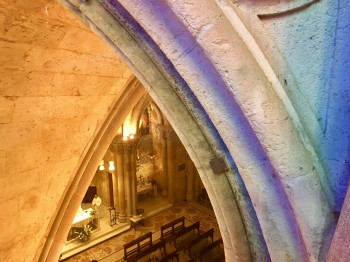
The church was designed by Catalan architect Antoni Gaudí, who took over the project of the church’s construction in 1883, one year after the construction commenced. He was appointed Architect Director in 1884. In the course of his architectural influence, Gaudí transformed its planning and design, combining Gothic elements with Catalan Modernism.
Years of Construction
Long before Gaudí’s death in 1926, when the extremely long construction period could no longer be denied, the pious architect remarked that his client was not in a hurry, thereby referring to God. The construction of the Sagrada Família progressed very slowly, as it both has always relied on private donations and was interrupted by the Spanish Civil War in 1936. Large parts of Gaudí’s models and construction plans as well as parts of the unfinished basilica were destroyed, wherefore the present design is mostly based on reconstructed versions of Gaudí’s plans. When Gaudí died, less than a quarter of the project and thus of the church’s construction was complete.
In October 2015, the current architect announced that the church has entered its final phase of construction. The six towers which are still to raise and most of the church’s structure are to be completed by 2026, the centenary of its architect's death.
Interesting facts
- Sagrada Família Barcelona is among the 10 best rated Tourist Attractions in Spain.
How to get there
The easiest and quickest way to get to the church is via Metro lines L2 and L5 until you reach the station Sagrada Família. Feel also free to get there by bus via 19, 33, 34, 43, 44, 50, 51, B20 and B24. The main entrance is on Correr de la Marina, in front of the Nativity Facade.

